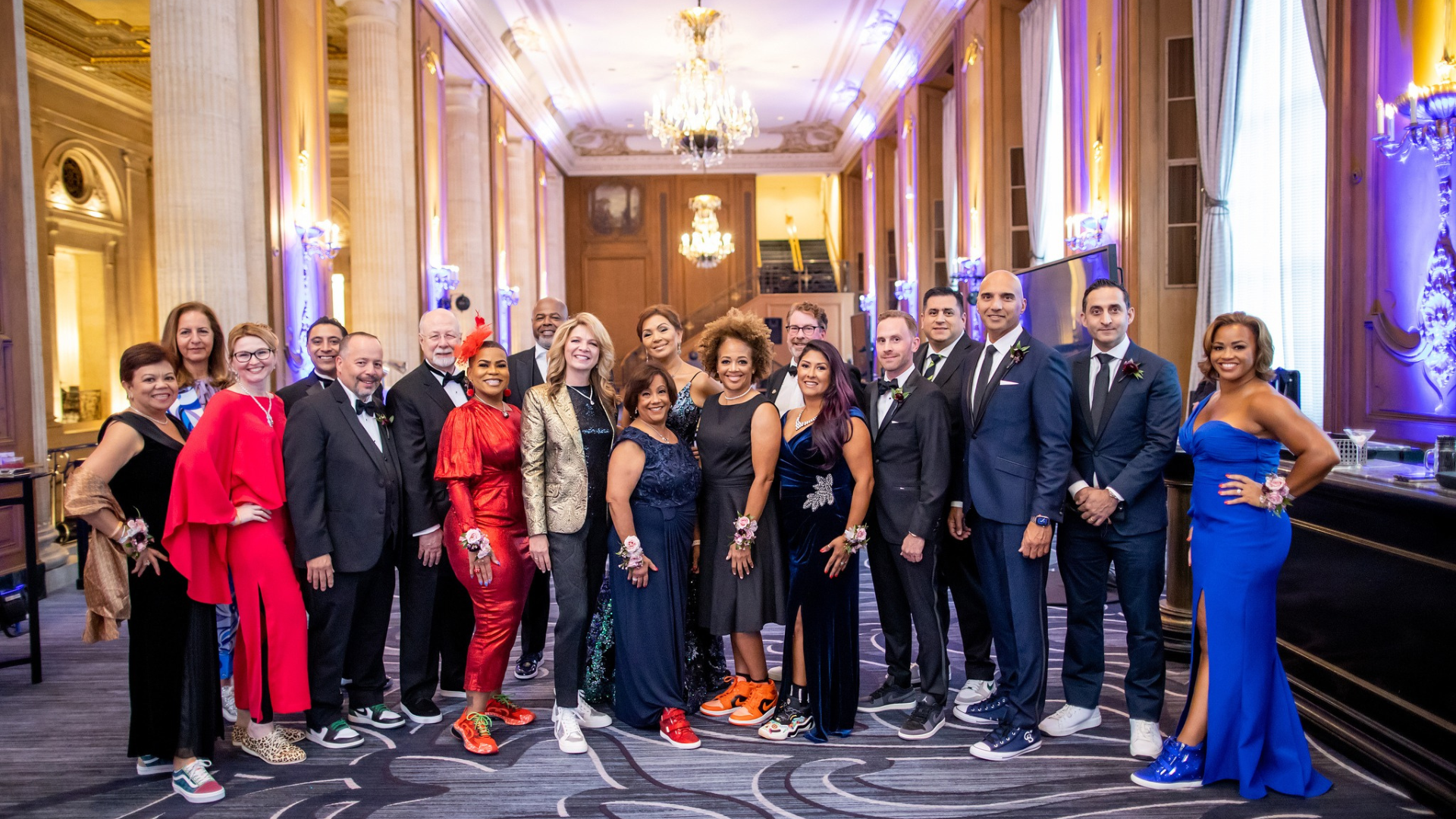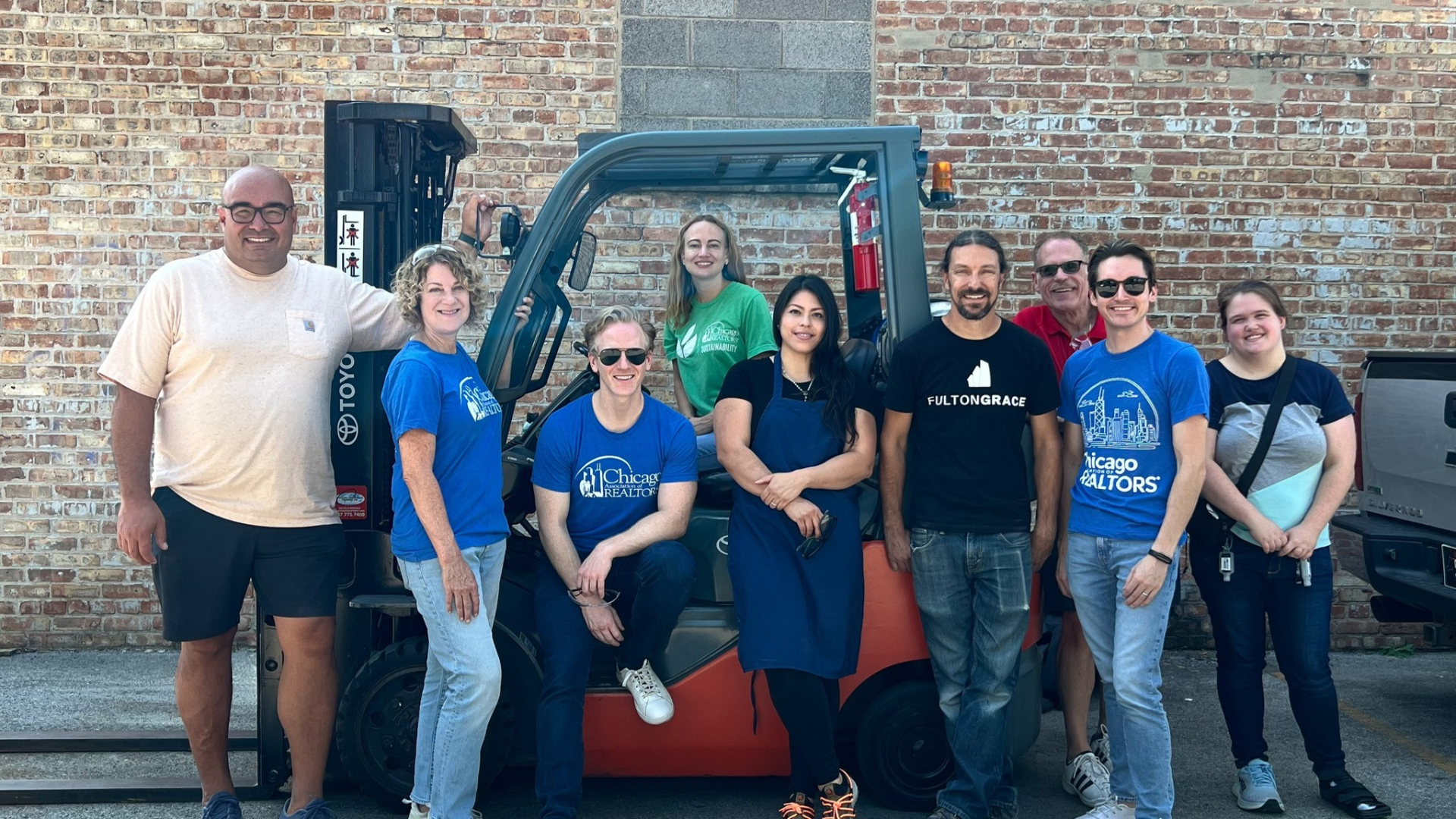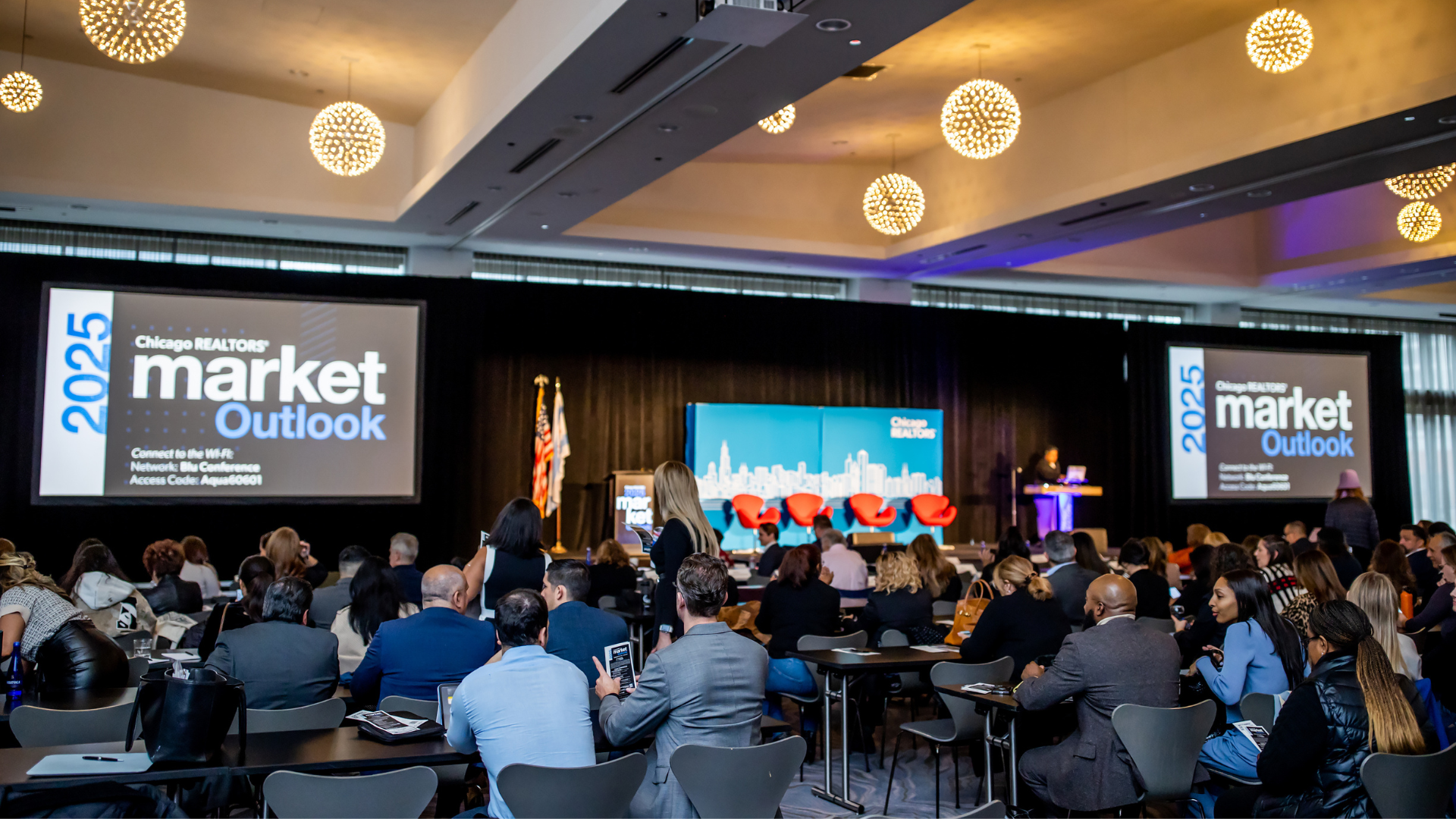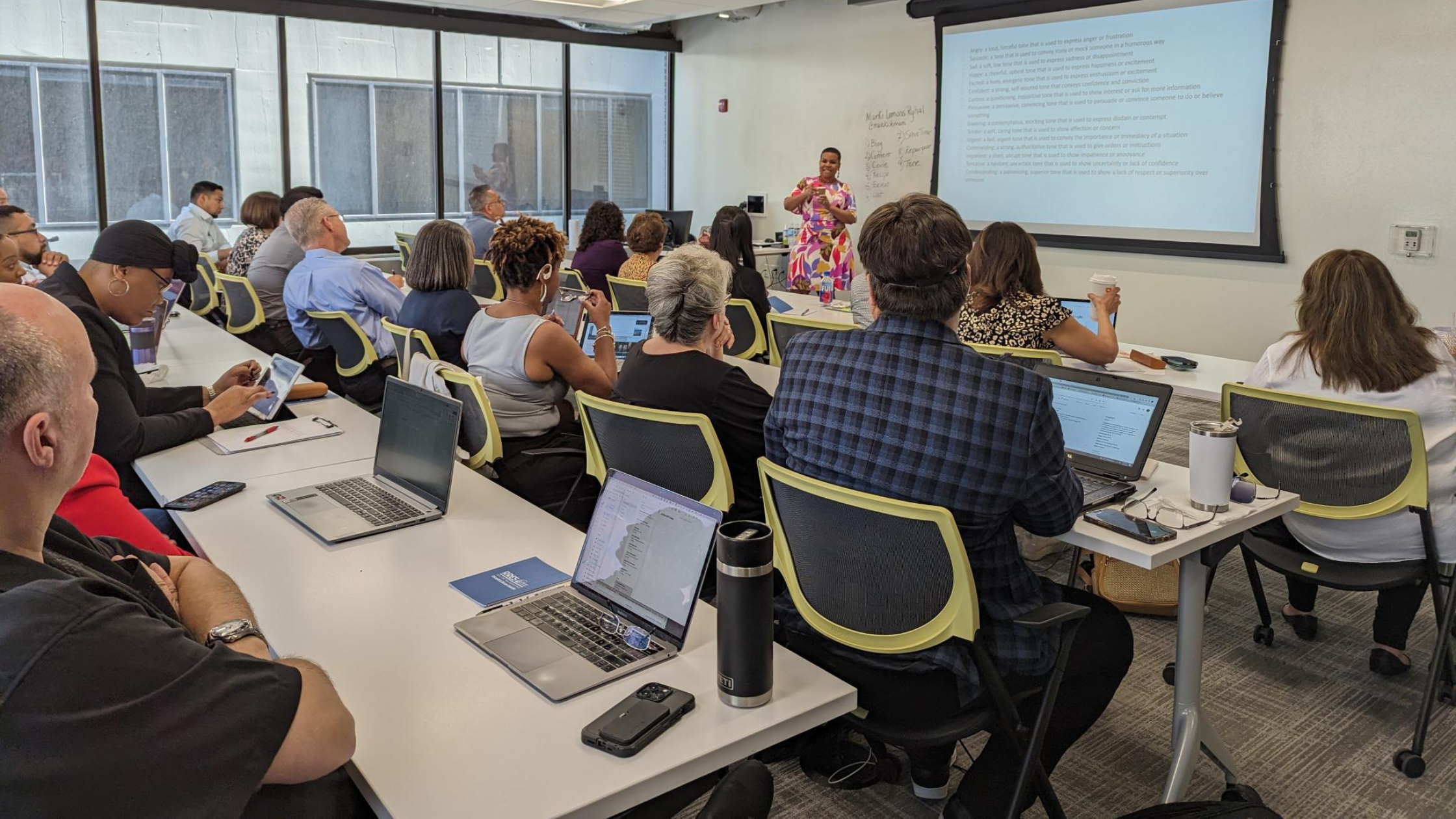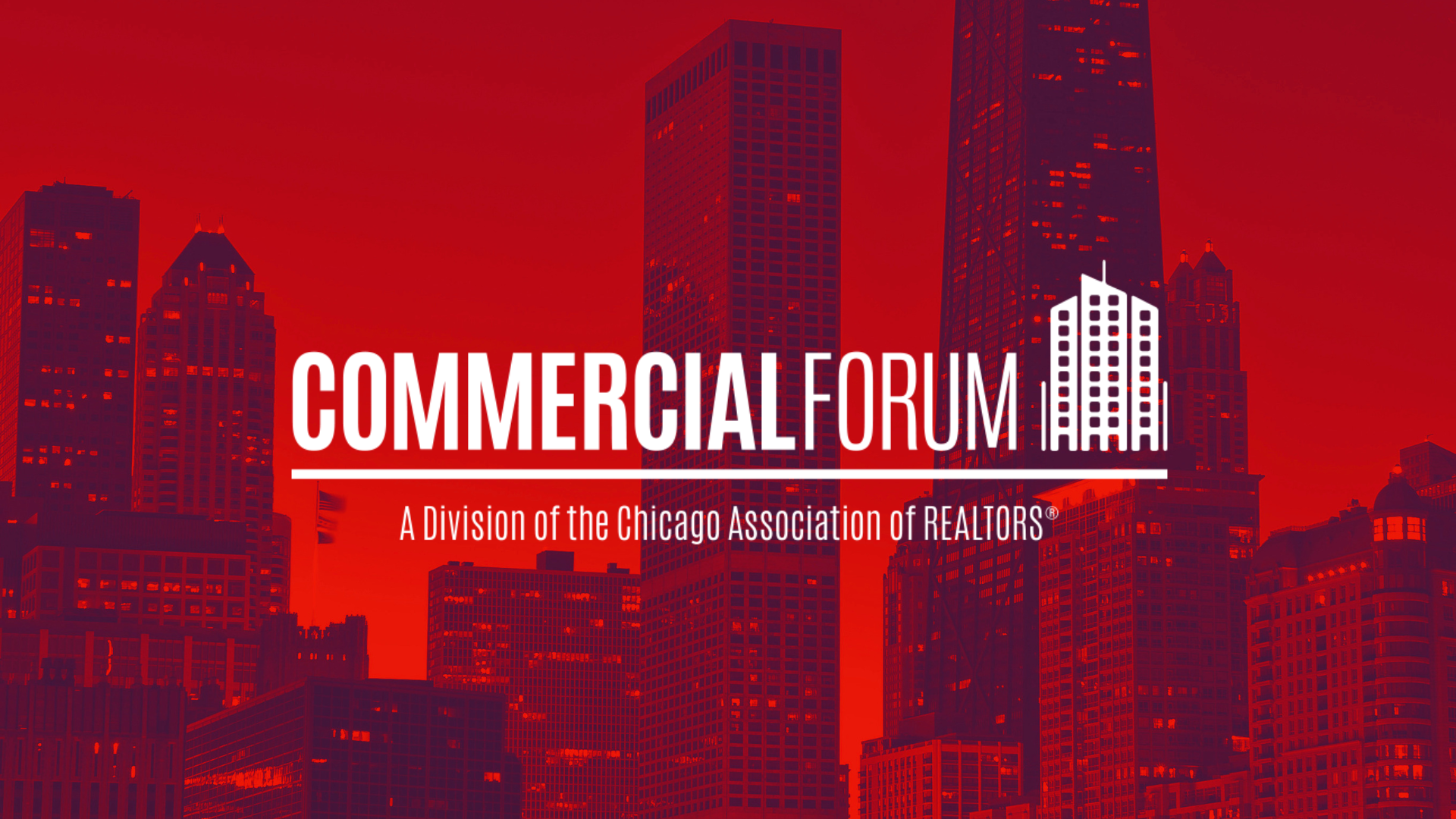We’ve all read the headlines about the impact of the pandemic on commercial real estate: the Magnificent Mile is a ghost town, fully remote offices and all electronic billing systems have taken hold, occupants have migrated away from “living, working, and playing” in amenity-rich downtown office and multifamily stacks, and restaurants have pivoted to delivery and pick-up only. Where does commercial real estate go from here?
We spoke* with commercial industry leaders around Chicago — and the biggest takeaway is the new normal means there is no such thing as normal.
*Some quotes have been condensed and edited for clarity.
In early April, with Major League Baseball’s Opening Day just around the corner and vaccines flowing throughout Chicagoland, commercial practitioners felt a sense of cautious optimism. After a sudden, massive market correction and what looked like a repeat of the 2007 economic crisis, Chicago’s commercial market was on the rebound, fueled by a white-hot industrial sector, steady-rolling multifamily properties, plucky retail and office asset classes, and a sudden release of capital after a year in investment lockdown. There seemed to be a light at the end of the tunnel for the companies that held it together and stayed the course. What was their secret — how did they weather a year of pandemic real estate? And, where would they go from here?
2019 CommercialForum Chair Dan Stratis, @properties Commercial: CommercialForum hosted its first Power Lunch last year and we all sat around in a Zoom. I was in this same room with this same sign on my wall behind me thinking “how is this going to work?” I knew it was going to be challenging for all asset classes, because things didn’t look good.
2020 & 2021 CommercialForum Chair Tony Hardy, J.D., Keller Williams ONEChicago and President, South Side Community Investors Association: For the first time in a while, we saw less than $2 billion in multifamily sales. Typically, this market is a $2.6 billion-$3 billion market.
2021 CommercialForum Vice Chair Jimena Sayavedra, Newmark: Newmark is an industrial brokerage exclusively. Our numbers went down as they did for all firms. It changed a lot according to the asset type. For me, there was a big stop at the beginning of the pandemic. Decisions were stopped from developers, investors, buyers — from everyone.
Moses Hall, MoHall Commercial & Urban Development: Month after month, we were still closed, and deals were on hold. I couldn’t get any lenders to lend! They were either very hesitant and had completely stopped lending, or it was very expensive to get any money.
2021 Global Real Estate Council Chair Mikus Kins, Be Realty, LLC: It’s true, the commercial industry really did come to a grinding halt for a while. One of the largest parts of our commercial business is storefront and restaurant leasing. It wasn’t 100% dead, but previously we’d be working on ten deals a month and during the pandemic we were working on one. Things didn’t look good. We had to make a decision.
With everything becoming uncertain overnight and years of industry trends flip-flipping over the span of a few weeks, commercial real estate needed to figure out the next move — and fast. If the investors aren’t calling and the lenders aren’t picking up, what do you do, exactly? At that point nothing felt normal.
2021 CAR President-Elect Antje Gehrken, CCIM, A.R.E. Partners: For me, the new normal for commercial is a funny concept because I don’t call it “normal,” and I don’t think it’ll ever be “normal” again. What we’re seeing is a reinvention across the boards, whether it’s the use of commercial space or how we approach selling and marketing it.
M. Hall: My business has really shifted to building close relationships with local banks. During any economic downturn, I think it’s important to have those strong personal relationships that can help keep you afloat. For example, I have a 66-unit apartment building listing in the Roseland community, and we’ve had several contracts and buyers, but no large bank wanted to touch it, even though the collection rate is good, it’s 95% occupied and self-managed, and it’s a local owner. We identified a local community bank that’s processing the deal and we should be able to close on it soon.
Amy Hall, CRX, CLS, SLD, COO, Caton Commercial Real Estate Group: You hear people talk about the opportunity to recognize what is important. We had to become laser-focused around the most important functions and how to get them done.
For brokers, we had identified when we have ready and willing clients. Before the pandemic, there was the allure of people who may have indicated they were a client, but when you get down to it, they’re not ready or able to transact. That vetting process became really refined in two key ways: one, not as many people kicking tires and two, are we spending our time well with those clients? We look at the number of listings we take and our volume. We may not have as many listings, but our volume went up, which translated to more revenue for the company. This is a long-term shift.
Suddenly, high-density was out of demand. Centralized corporate headquarters became ghost towns as workforces went fully remote. New models like the “hub & spoke” approach, where a smaller centralized HQ is intentionally connected to a system of remote offices located closer to where workers were now living, came online. Some tech giants opted to go fully remote for good, while others actively sought subleases to weather the storm. What would be the long-term solution?
Dan Spiegel, Managing Director, Coldwell Banker Commercial: Look, the commercial real estate market in terms of users and owners is still evolving to react to COVID-19. Changes in office space will be long-term and ideas like social distancing that didn’t exist a year ago are now here. But how many of these changes will be long-lasting?
Robert E. Thomas, Broker, Jameson Commercial: A lot of what was revealed by COVID is how much we are creatures of habit. In other words, in industry or business, you’re used to going to the office. It’s just what you did. But this forced us to rethink it because those habits have changed.
Michael Williamson, CCIM, Senior Broker, SperryCGS Ellermann, 2021 President, CCIM IL Chapter: Our clients are holding steady, or if they are making a move, they’re looking for a short-term lease which will allow them to put things off for later, when they know what to do. Essentially, all our activity now is folks looking for single-floor office space where they won’t need to interact with other tenants.
Kins: The historic large, downtown HQ has ended with remote work. Many firms are going to continue working remote and using satellite offices. We’ll most likely see more of the hub and spoke model, where the main office may only hold a hundred employees, and the space of the offices will change with many remaining remote. The flip side of that is more regional offices.
Williamson: I don’t want to make it seem like it’s the absolute apocalypse with office right now. Office is doing ok, it’s just a certain sector that’s struggling. I’m in an expansive coworking space right now, and I can see all the changes Class A office has rolled out: kick pedals for doors, air quality and ventilation systems, anti-viral paints, automated elevators and lights, heat sensors in the lobbies. If they can make the changes, they’re making them.
Developers are tweaking their plans to entice folks back to the office. But the price people are paying to be downtown is exorbitant, especially with common areas they can’t use and frankly, aren’t safe to use.
Stratis: Listen, there were struggles in the downtown markets even pre-COVID-19. COVID-19 just accelerated all of that. But the dynamics have shifted a little geographically. The West Loop is booming. All of that used to take place in the Loop. I’m confident the downtown market will be fine.
Retail has become too topsy-turvy for some investors. Approximately 5,000 restaurants in the Chicagoland region have shuttered their doors over the past year. Where do we go from here?
Spiegel: In retail, it’s a tale of many cities. You have downtown urban retail that is subject to the same impact of office space. If there are less office workers downtown, then there is less retail. If there is less demand for multifamily, then, again, less retail. Long-term we’ll see if people are comfortable living downtown in the same numbers as the past.
In suburban locations, shifting retail trends aren’t new – ordering online, less in- person shopping, etc. But what is called a retail center is changing. It used to be store, store, store, but now I’m seeing Medtail with medical offices, which aren’t really retail, anchoring a retail development, and you may find a restaurant that’s takeout only or a ghost kitchen.
Myra Nimchaiyong, Broker, COMPASS, Treasurer, NICAR Board of Directors: A lot of the spaces in more desirable locations have become available, and some people have saved a lot of money by not being able to go out. As a result, they’re buying. There’s a recent boom of “ghost kitchens,” which are restaurants that leverage technology and save on overhead by not having a front of house. Several of my clients launched ghost kitchens that got successful via delivery apps, allowing one restaurant to become eight by offering eight different menus from the location. It can be a lot to manage, but if you set it up with the same core ingredients but different recipes, it can be very lucrative.
Luigi Randazzo, AIA, VP of Architecture, Keystone Planning + Design, PLLC: At the moment, a lot of our development work is in Medtail. Hospitals
realized if they opened in community settings, they would have lower expenses. Population health is also a factor. You go out to the community and offer some preventative care. If it’s easier for people to drive to the retail section of the neighborhood, then they can get to their doctor more easily and go more often.
A. Hall: Going forward, we’ll see a lot of innovation around convenience and technology, which will be an enduring shift in the way we do business. Retailers have learned that the easier they can make a consumer’s life, the more that consumer will spend with them. Convenience is the new currency… After enough months of doing things this way, it has now become the way we do things.
A contracting job market and uncertainty about rent collection threw Chicago’s multifamily 5+ market sideways. Would an eviction moratorium result in an inability for property owners and managers to collect rent? Would rent relief efforts be enough to keep everyone above sea level? How would amenity-rich apartment buildings hold up when common areas were entirely off limits?
Gehrken: The vital question agents need to understand if they want to work in multifamily 5+ is: do you want a higher property value, which will over time go up, or do you want a larger cash flow?
Rent was down in 2020, and we reduced rent without being asked in order to keep people in their spaces. I don’t think a landlord’s goal should be to evict people; working with your tenants is so important. As a result, we found the pandemic less challenging than some of the portfolio companies who aren’t as in touch with their tenants and owners.
Hardy: Operating expenses have changed due to people working from home. If you’ve got parents working at home and kids remote learning, then you’ve got people in each unit for those hours when they would’ve been at the office or school. All of this leads to more water, gas and electricity consumption, more garbage and more overhead. At the same time, rents have flattened. It’s a pandemic. You can’t raise rents. But there is still investor confidence, and I’m optimistic that the increased access to vaccination will lead to better returns.
Spiegel: Rents have declined for high-amenity dense living. That said, you have other forces at hand. Are those preferences in urban living versus rural? Are those shifts short term or long term? How many jobs are going to ask you to be in the office? How long until festivals and concerts return? For renters, these are short-term decisions based on preference, and those preferences can change.
Kins: We’re just at the beginning of the supply and demand equation. Anyone driving around Chicago these days will see all the “for lease” signs up in the windows. I don’t think we’ll see the end of that shift until winter. That will limit how much a landlord can charge. I think most landlords are hoping that’s not the case, but I do have some owners who feel they just need to get their spaces leased up, even if they take a haircut. They’re looking at shorter leases and lower rates; those that have done that, I’ve leased up their spaces. Those that have stuck to their prices, I’m not seeing much there.
Spiegel: On the private investor market, be careful of the bid-ask gap. Sellers might think their property is still high value because of market location, while a buyer might think there’s a lot of value because of the pandemic. So, there’s still a big gap between what sellers and buyers think a property is worth.
A. Hall: For co-living and coworking, things are interesting. Just as with every other public space, there have been challenges because of the nature of close proximity that was an intentional design feature of co-living. We’re having to reimagine and rework the vision some. Do I think co-living and coworking are going away? No, absolutely not. Will they look a little different? Perhaps, and that will depend on how we come out of the pandemic as a society. Some of it will be driven by mandate and what’s allowable in the physical space, and the rest will be driven by the end user and how they ease back into those environments. The pandemic has caused people to be cautious, but the desire to have community has not changed.
For a few years now, industrial has been the darling of commercial asset classes due to the growth of ecommerce; the pandemic has bolstered that growth. What’s the limit, and how well is Chicago
positioned to remain a leader?
Sayavedra: We all know industrial was doing really-well pre-pandemic because of changes in ecommerce, but the pandemic accelerated these trends and now industrial is on fire. Because of changes in human behavior and increases in people using ecommerce, we have had exponential growth. Leasing activity during the first 3 months of this year alone has seen a 64% increase in since 2018. People want everything fresh and within two or three hours, which has created new challenges and driven innovation in supply centers. Life science is where all the smart money is flowing, and a lot of money is pouring into the supply side of labs. But it isn’t a slam dunk. Chicago has a lot of older “Class C” industrial space where you may have nice buildings, but they don’t have the yard space or turnaround clearance for 50-foot trucks to maneuver.
M. Hall: Speaking of storing goods, vaccine demand has pretty much spawned growth in cold storage, because we need places to store vaccines before we can distribute them.
Spiegel: All of these factors mean that Chicago’s industrial sector remains one of the top 3 industrial markets in the country due to location and access to air and rail. The question mark in office is already somewhat decided in industrial. For retail, we trend to consumers shopping online, which is great for industrial. As a result, Chicago has low vacancy for modern distribution space and smaller footprints are in demand because of delivery. You need to store goods and vendors want them for quick delivery.
What’s on the horizon for 2022? Where will we be in a year?
Nimchaiyong: Look at what the future will hold after a year in quarantine where we’ve all gained new interests and hobbies. I watch all trends – not just real estate trends – because what people do with their free time and where they spend money will affect how businesses develop their plan in the next five years.
Gehrken: There’s something for anyone looking, despite COVID. People are still staying in the city and as the city opens up, they’ll want to be here. People have short memories. I drove downtown to Michigan Avenue and walked around; I was right across from the REALTOR® Building, and I thought “yes, people will want to be here.” There is a need. Everyone isn’t going to move to Indiana with the chickens.
